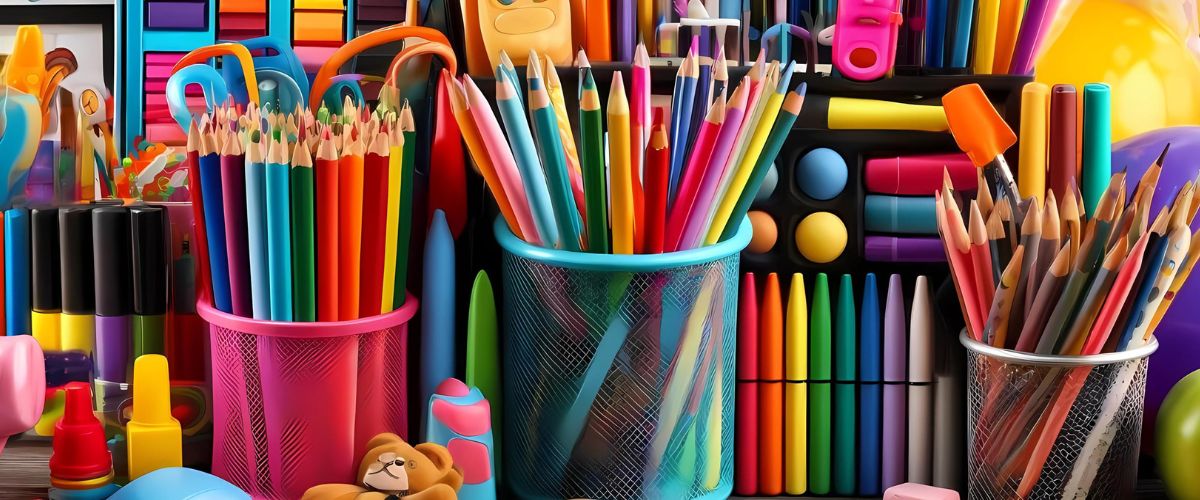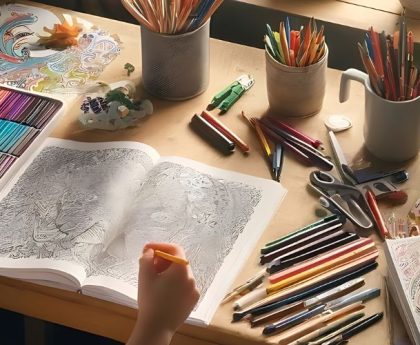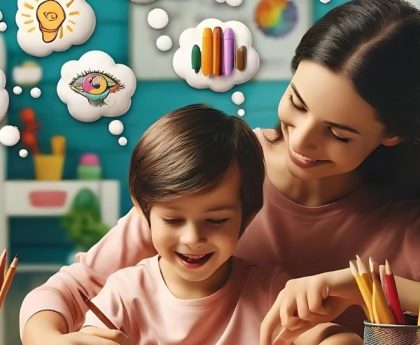When it comes to colouring, the materials your child uses can significantly influence their experience and the development of their artistic skills. From crayons to coloured pencils, each tool offers unique benefits and challenges. Understanding the differences between these colouring mediums and identifying the best options for different age groups can help foster creativity and improve motor skills. Here, we explore various materials suitable for kids at different stages of their colouring journey.
Best Crayons for Toddlers
For toddlers, who are just beginning to develop their grip and motor skills, crayons are the ideal choice. Crayons are typically robust, easy to hold, and don’t require much pressure to make a mark, making them perfect for little hands.
Choosing the Right Crayons
- Non-toxic and Safe: Always ensure the crayons are non-toxic, as toddlers are prone to putting objects in their mouths. Crayons made from natural waxes and pigments are a safer option.
- Large and Chunky: Large crayons are easier for small hands to grip. Chunky crayons or those shaped like animals or building blocks can double as play items and are easier for toddlers to manipulate. These shapes can also stimulate imagination and play.
- Washable Crayons: These can be a lifesaver, allowing for easy cleanup on surfaces and fabrics. Some brands offer crayons specifically designed to wash out of clothing and off walls easily.
Benefits of Crayons for Toddlers
- Develops Grip and Motor Skills: The thickness of crayons helps toddlers develop their grip and control, essential for later writing skills. This early development of fine motor skills can also improve hand-eye coordination.
- Encourages Creativity: The bright colours and easy application make it fun for toddlers to express themselves. colouring can also enhance cognitive skills, such as recognizing colours and shapes.
- Safe Exploration: Crayons are less likely to cause injury, making them a safe option for young children who are still learning about their environment.
Markers vs. coloured Pencils
As children grow, markers and coloured pencils become viable options, each serving different purposes. Understanding the strengths and weaknesses of each can help in selecting the best tool for your child’s needs.
Markers
Markers are great for bold, expressive lines and are often favored by younger children for their ease of use and vibrant colours.
Choosing the Right Markers
- Water-based Markers: These are safer and easier to wash off than alcohol-based alternatives. They are also less likely to emit harmful fumes.
- Wide Grips: Markers with wide grips are easier for small hands to hold. Ergonomically designed markers can reduce strain and improve control.
- Non-toxic Inks: Ensure that the markers use non-toxic inks to prevent any harm if accidentally ingested.
Benefits of Markers
- Bold colours and Easy Application: Markers are ideal for filling large areas with colour quickly, which can be satisfying for younger children. The vivid colours can also help in learning and recognition.
- Expression and Creativity: The vibrant colours and ease of use encourage children to be more expressive in their art. Markers can be used for various techniques such as stippling, hatching, and creating textures.
- Versatility: Markers can be used on different surfaces, including paper, cardboard, and fabric, allowing for diverse creative projects.
coloured Pencils
Coloured pencils offer more precision and are better for detailed colouring and shading techniques. They are suitable for older children who have developed finer motor skills and can handle more delicate tools.
Choosing the Right coloured Pencils
- Non-toxic and Safe: Ensure the pencils are labeled non-toxic, especially for younger children.
- Range of Shades: Pencil sets that include a variety of shades can enhance colour blending and layering practices. Look for sets that offer both soft and hard pencils for different effects.
- Durability: Opt for pencils that do not break easily and have strong leads. Some brands offer reinforced cores to prevent frequent breakage.
Benefits of coloured Pencils
- Precision and Detail: coloured pencils allow for detailed work and finer control, which can help in developing intricate artistic skills. They can be used for fine lines, detailed patterns, and realistic drawings.
- colour Intensity Variation: The ability to vary colour intensity by applying different pressures can help children explore more sophisticated artistic techniques. This can teach them about light, shadow, and depth in art.
- Long-lasting: coloured pencils typically last longer than markers, making them a cost-effective choice in the long run.
Non-toxic and Washable Options
Safety is paramount when selecting colouring materials for children. Always opt for non-toxic labels to ensure that the colouring tools are safe for use, especially since younger children might be tempted to put them in their mouths. Washable materials are highly recommended, particularly for younger children, to minimize cleanup worries and keep clothing, furniture, and walls free from permanent stains.
Importance of Non-toxic Materials
- Health and Safety: Non-toxic materials ensure that there are no harmful chemicals that could be ingested or cause skin irritation. This is especially important for younger children who are more prone to accidental ingestion.
- Environmental Impact: Choosing non-toxic and eco-friendly materials can also reduce the environmental impact, making it a better choice for the planet.
Benefits of Washable Materials
- Ease of Cleaning: Washable crayons, markers, and paints allow for easy cleanup, reducing stress for parents and caregivers. This means more freedom for children to explore and create without worrying about making a mess.
- Preservation of Surfaces: Washable materials help in preserving the condition of walls, furniture, and clothing, preventing permanent damage.
Additional Tools
Beyond the basics, there are a few additional tools that can enhance the colouring experience:
Erasers and Sharpeners
These are essential for coloured pencils.
- Erasers: Choose erasers that are gentle on paper and effective at lifting pencil colour. Some erasers are designed specifically for coloured pencils and can remove colour without damaging the paper.
- Sharpeners: Sharpeners should be safe and easy for children to use. Look for ones with a container to catch shavings, preventing mess. Dual-hole sharpeners that accommodate different pencil sizes can be especially useful.
Brushes and Blending Stumps
For advanced colouring techniques, especially with coloured pencils, tools like brushes and blending stumps can help in smoothing out colours and creating gradients.
- Blending Stumps: These tools are excellent for blending colours and softening edges, creating a more polished look.
- Brushes: Soft brushes can be used to blend colours gently and can be particularly useful for watercolour pencils.
Storage Solutions
Proper storage can help organize colouring materials and make them easily accessible. Options like pencil cases, storage bins, or even DIY containers can keep materials tidy and can be a fun project to decorate together.
- Pencil Cases: Look for cases with compartments to keep pencils organized and prevent breakage.
- Storage Bins: Clear bins allow children to see their supplies easily, encouraging them to take out and use their materials.
- DIY Containers: Creating and decorating storage solutions can be an additional creative project, enhancing the artistic experience.
Enhancing the colouring Experience
- colouring Books and Pages: Provide a variety of colouring books and pages with different themes and complexity levels to keep the activity engaging and challenging.
- Digital colouring Tools: Introduce digital colouring apps and tools for a modern twist on traditional colouring. These can help children develop digital literacy and provide a different medium for creativity.
Wrapping Up
The right colouring tools can make all the difference in fostering a child’s love for art and improving their colouring skills. By selecting age-appropriate, safe, and engaging materials, you can provide a foundation for creativity that encourages exploration and expression. Whether through the bold hues of markers or the intricate details achievable with coloured pencils, each colouring tool has the potential to unlock new levels of creativity and enjoyment in your child’s colouring experience.





